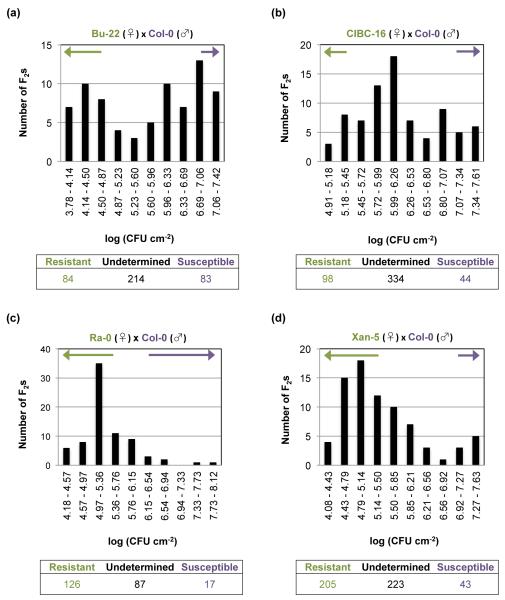Fig. 5.
Multiple loci are involved in resistance to Pseudomonas syringae pv. tomato (Pst) DC3000 in the resistant Arabidopsis accessions. Segregation of the resistance to Pst DC3000 in the F2 generation derived from crosses of the resistant accessions (♀) (a) Bu-22, (b) CIBC-16, (c) Ra-0, and (d) Xan-5 with the susceptible parent Col-0 (♂). The segregation of the resistance of c. 80 individuals is shown in each graph. The arrows above the bars indicate those F2 individuals that were identified as either resistant (green arrow) or susceptible (purple arrow) to Pst DC3000 infection. F2 individuals were determined as resistant if their value of in planta bacterial growth was lower than the highest data point for the resistant parent, and were deemed as susceptible if that value was higher than the lowest data point for the susceptible parent. The table below the graph indicates the segregation of the resistance for all of the F2 individuals evaluated. CFU, colony-forming units.

